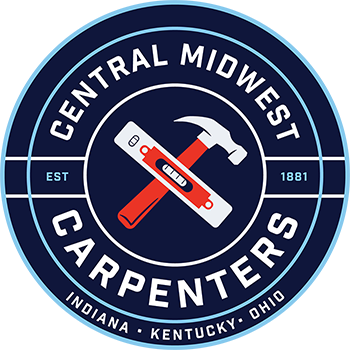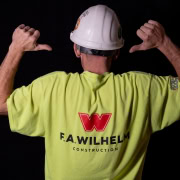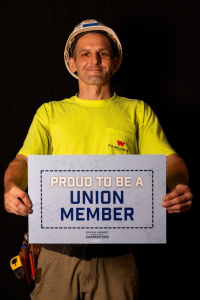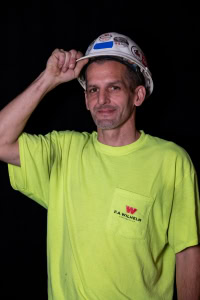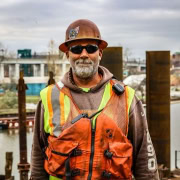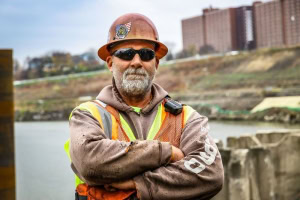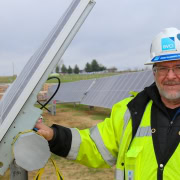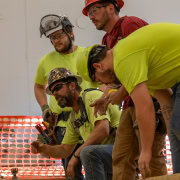Frank Zagar comes from a long line of Union pile drivers. He’s a third-generation union member and is honored to uphold the strong tradition in his family. He’s been in the union for over 20 years and is now dedicated to growing his craft by teaching the next generation of union members at our training center in Richfield, OH.
Simply put, piledriving is the foundation upon which the other crafts build. This relationship between crafts is something that makes the Central Midwest Carpenters so powerful Frank discussed this relationship by saying, “Everyone is working together – one craft starts, and another comes in and continues where they left off.” He alluded to the fact that this symbiotic relationship strengthens the bond he feels with his union brothers and sisters, regardless of their craft.
Piledriving is an extensive craft that runs deeper than most people realize. When people think of piling, they generally think of building the base of a building. Driving into the ground to build a strong foundation is, in fact, the crux of what piledriving is – but the areas, conditions, and objectives of each jobsite vary drastically. For instance, piledrivers build foundations for skyscrapers, set piles for piers and docks, and even perform ecological jobs like shore retention.
Frank’s favorite forms of piledriving are those in and along waterways, such as the Cuyahoga River and Cleveland Harbor, to name a few he’s worked on. The added layer of difficulty (and risk association) is something that Zagar has sought out throughout his career. According to Frank, successful jobsites are about mitigating risk, looking out for your fellow brothers and sisters, and teaching the next generation how to perform at the highest level.
This is precisely the reason Frank is an instructor at the Richfield Training Center in Ohio. He wants to expand the Central Midwest Carpenters’ reach when it comes to piledriving. “This is such a cool line of work. We just want more people aware of everything we do,” Zagar said when asked why he took on the role in the training center. He genuinely enjoys teaching people his trade.
“These kids coming up are self-motivated and hungry […] They want to get out there and make money doing this, so all I have to do is steer them in the right direction,” he said about the prospective pile drivers in the program currently. This attitude is precisely why he believes now is the opportunity to grow piledriving as a craft. The interest is at a high level, so all he has to do is generate awareness for what piledrivers do daily.
As is a common theme with all our fellow union members, the brotherhood is Frank’s favorite part about being in the Central Midwest Carpenters. He tries to instill this value in every apprentice he teaches: “Love your brother. They’ll be there when you need them the most,” Zagar said when asked what the most important advice he gives apprentices. From being on dangerous jobsites with heavy machinery suspended overhead to pep talks before you even get to the job in the morning, your union brothers and sisters are there for you.
